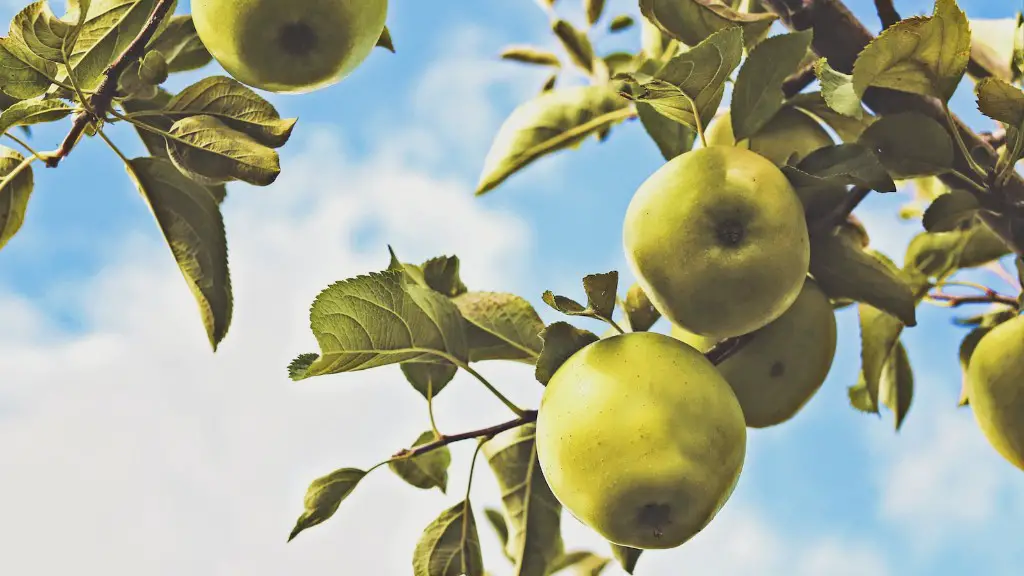Picking out the right lemon tree for your home or garden can be an overwhelming task. Contemplating the different types, sizes and whether it’s suitable for your location can be a challenge. But if you keep the following tips in mind, you’ll know exactly how to choose a lemon tree and get the most out of it.
Firstly, decide which type of lemon tree you’d like to purchase. Whether it’s a Eureka Lemon, a Meyer Lemon, or a Limequat, each has its own unique characteristics and is suited for different applications. Each one is more suited for specific regions and climates as well, so it’s important to determine what will work best for your area.
Also, consider where you’ll be planting the lemon tree. If you want to grow it indoors, you’ll need to find a dwarf lemon tree that can adjust to the climate. Don’t forget to pay attention to the size of the container it’ll need so you won’t have to repot it too soon. If you plan to grow it outdoors, it’ll need to be in an area with plenty of sun and healthy soil.
Next, research the lemon tree’s sunlight and water requirements. Knowing how much sunlight, water and nutrients each lemon tree needs is essential for proper plant health. Additionally, factor in how much time it takes for the lemon tree to produce fruit, so you’re aware of when to expect a harvest.
Also, ask yourself how much space you have available for a lemon tree. Measure the area to determine what size tree will fit your available space. Developing a detailed plan will help you pick out the right tree and ensure it has enough space to grow.
Finally, pick an appropriate time to plant your lemon tree. If you’re growing outdoors, plant the tree when the climate is right so it has time to adjust to the environment. Make sure the potting soil is moist before planting, and use a fertilizer to provide maximum nutrition. No matter what type of lemon tree you choose, you’re sure to get the most out of it with these tips in mind.
Why Should You Choose a Lemon Tree?
There are countless reasons why people choose to grow lemon trees. Not only does it offer a fresh, organic source of vitamin C, but the fruit is also used for culinary and medicinal purposes. Not to mention, the tree adds an ornamental atmosphere to homes and gardens. For these reasons, it’s easy to understand why so many people tend toward a lemon tree.
Moreover, lemon trees come with a wide selection of advantages. For starters, you’ll get a plethora of delicious, juicy lemons for culinary purposes. Depending on the type of lemon tree, the lemon size and texture can vary. Additionally, the tree produces fragrant blooms that emit a pleasant scent during the blooming season.
Also, lemon trees don’t require a lot of effort to maintain. With proper care, they can thrive in most areas and provide healthy, beloved fruit. Unless extreme weather occurs, they’re resistant to most terrestrial afflictions. And if you live in temperate climates, you have the option of planting them year-round.
By planting a lemon tree, you’re investing in future harvests. With the right nutrients and a little love, you can successfully plant and nurture it for years. If the proper maintenance steps are taken, you can consistently enjoy a plentiful harvest of lemons throughout the year.
In conclusion, growing a lemon tree is an excellent way to yield an assortment of delicious, juicy lemons. The lemons serve multiple purposes, and the tree requires minimal upkeep and maintenance. Plus, you don’t need to be an expert to get started. All you need is a bit of effort, knowledge and the right conditions to grow a lemon tree.
How to Care for a Lemon Tree?
Having a lemon tree in your garden or home can be a great addition. But to keep it healthy and growing, it’s essential that you take proper care of it. Knowing how to care for a lemon tree can help you grow a robust, productive tree for years to come.
Firstly, the tree should be planted in well-drained soil with good drainage. The soil should not be too sandy or clay-like, and you should give the tree a deep watering once a week. Additionally, the tree should receive full sunlight to thrive, as citruses need a lot of sun to produce healthy fruit.
When it comes to feeding the lemon tree, you should use a balanced fertilizer that is low in nitrogen. The tree should be fed regularly throughout the growing season, but you should always research the type of fertilizer that works best for your type of lemon tree. Additionally, add mulch to your tree in the off-season to preserve moisture.
You should also regularly maintain the plant to keep it healthy. Prune any dead branches to keep the lemon tree developing in the right direction. Make sure the leaves are clean and clear of soot and pests. Also, use a soil tester to determine if it needs more nutrients to stay healthy.
Last, but not least, keep an eye out for any signs of disease. Common symptoms of ailing lemon trees can include yellowing of leaves and spots on the stems. If your tree is showing signs of disease, you should remove any affected material and treat the area with a fungicide.
In summary, the key to growing a healthy, fruitful lemon tree is proper maintenance. To get the most out of it, make sure you plant it in well-drained, sun-filled soil and give it regular feedings. Additionally, keep it clean and prune regularly. With the right care, you can enjoy your lemon tree for years.
What are the Benefits of a Lemon Tree?
There are countless benefits to growing a lemon tree products in your garden or home. The tree is loaded with nutrition and provides an easy way to add flavor to food dishes. Here are some of the top benefits of a lemon tree.
To start, lemon trees offer plenty of fresh, juicy lemons. Depending on the type of lemon tree, you can enjoy different sizes and textures of lemons, each loaded with Vitamin C and other essential nutrients. Plus, lemons can be used in a plethora of culinary dishes, while their juice can be used to add flavor or heal sickness.
Additionally, lemon trees produce lovely, aromatic blooms during the blooming season. The blooms provide beautiful colors and fragrances that help bring life to homes in the spring. The flowers contain unique nectar that attracts bees and other pollinators.
What’s more, lemon trees are fairly easy to grow and maintain. As long as you give it the proper amount of sunlight, water and nutrients, it’ll grow without giving you too much trouble. Since different types of lemon trees require varying degrees of upkeep, there is an option for beginner and experienced growers.
Furthermore, lemon trees are perfect for outdoor décor. In order for the tree to look its best, make sure you regularly shape it and prune away any dead leaves. With regular maintenance, the tree can offer a burst of color and vitality to homes and gardens.
Finally, by planting a lemon tree in your garden you can produce homegrown, organic lemons and contributes to the environment. You get to bypass the store and have a healthier, more reliable option.
Best Climate and Location for Lemon Trees?
Different types of lemon trees have different needs, so it’s important to understand the climate and location you’ll be planting your tree in. Most lemon trees thrive in warm, humid climates that offer plenty of direct sunlight. But to get the best results, it pays to understand your lemon tree’s specific needs.
Firstly, make sure the planting site has enough sun and shade. Most lemon trees need 6 to 8 hours of direct sunlight to produce healthy fruit. However, the plants also need some shade to prevent overexposure. Plant it in an appropriate location that offers a good balance of direct and indirect sunlight.
Also, consider the climatic conditions for each type of tree you’re looking to plant. Meyer Lemon trees require more subtropical climates, whereas Persian Lime trees require a more temperate environment. Each type of tree needs a different climate, so research your chosen variety to make sure it will fit your current climate.
Additionally, the temperature of the soil plays an important role. You should check if the temperature of the soil is optimal or if it needs to be amended before planting a tree. The ideal temperature should be between 65 and 75 ℉. To reach this temperature, you may have to add some loam, organic matter or compost.
Finally, research the soil type that works best for lemon trees. The soil should be light and well-draining, as the roots are prone to drowning if the area stays too wet. Clay or silt soil is best, but if you have sandy or loam soil you may need to add post before planting.
In conclusion, make sure to consider the environment you’re planting the tree in. Ensure that there’s enough sun and shade, the temperatures are suitable and the soil is light and well-draining. Taking these conditions into consideration makes sure you’re making the most of your lemon tree.
What are the Signs of a Sick Lemon Tree?
Like any plant, lemon trees are prone to various afflictions. If you’re not careful and neglect to take good care of your tree, it may start to show signs of illness. Knowing what to look out for can help you identify and take care of the issue before it gets too serious.
One of the biggest signs of a sick lemon tree is if the leaves begin to yellow, curl or drop off the tree. This could be a sign of too much sun or irrigation. If the tree gets too much water, the roots can’t absorb enough nutrition and cause the leaves to die.
Also, watch out for small raised bumps and black spots on the stems and leaves. These are signs of particular pests, like aphids and spider mites. If you notice these spots, spray the leaves with an insect repellent and apply a natural pesticide to eliminate the problem.
In addition, pay attention to the nutritional balance of the tree. Poor nutrition may cause the tree to produce small, deformed lemons or no lemons at all. To prevent this, make sure you use an appropriate fertilizer that is low in nitrogen. Additionally, add mulch to the soil during the off-season to help preserve moisture.
Lastly, keep an eye out for any signs of fungal diseases. These typically appear in the form of a white or brown powdery substance on the leaves. If you notice this, use a fungicide to treat the tree. Additionally, make sure that you empty water from the potting dish, as standing water can also cause fungal issues.
In summary, there are multiple signs of a sick lemon tree. If the tree’s leaves start to yellow and drop, or if it’s producing deformed lemons, it may need help. Additionally, watch for raised bumps, spots, fungal diseases and other infestations. With good, careful observation, you can identify and take care of the issue before it gets too serious.





